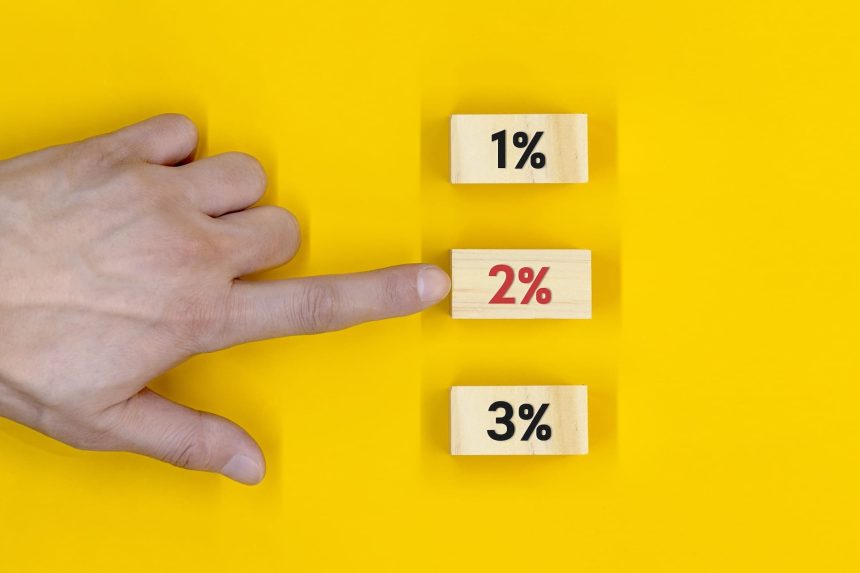Credit Sesame discusses the Fed’s 2 percent inflation goal and whether we can learn anything from history.
The latest inflation announcement set off a chain reaction. Consumer prices rose more quickly than expected in March, and the resurgence of inflation may cause the Federal Reserve to rethink its approach to interest rates. The prospect of interest rates remaining at current levels longer than expected sent stock and bond markets plunging.
Market reactions result from events and also from how those events compare to the expectations that led up to them. In late 2023 and early 2024, the stock market enjoyed a rally based on the expectation that inflation would continue to ease and that the Fed would start to cut interest rates in response. The Fed itself signaled that it expected to do this.
In April 2024, events are running contrary to expectations. So how realistic were those expectations in the first place?
2024 is off to a poor start for the Fed
In the last quarter of 2023, the Consumer Price Index increased by less than half a percent. Projected out over a full year, that would result in an annual rate of inflation of 1.9%. That’s a far cry from the 9.0% inflation rate reached in mid-2022 and very much in line with the Fed’s long-term goal of 2.0%.
2024 has been very different. The CPI rose by 1.13% in the first quarter, which would project a 4.6% annual rate of inflation.
In December, the Fed forecast that inflation would continue to moderate this year, allowing it to lower interest rates by about three-quarters of a percent by the end of 2024. The Fed forecast that it would be able to go even further over the next couple of years, lowering rates from the current level of 5.33% to 2.9% by the end of 2026. Lower rates are good for stocks and bonds, so financial markets responded positively.
Some investors were too optimistic. Many speculated that the Fed might start lowering rates as soon as March and might cut rates by more than three-quarters of a percent by the end of 2024,
March 2024 has come and gone without a rate cut. Speculation about more aggressive rate cuts has largely dried up, and some people are criticizing the Fed for signaling a rate cut too soon.
The Fed’s goal is to rein in inflation. With employment remaining strong, inflation has been the main area of focus for the Fed’s monetary policy. Having inflation flare up again is a problem for the Fed and calls into question whether its stated goal of maintaining a long-term inflation rate of 2% is attainable.
How realistic is the Fed’s 2 percent inflation goal?
The Personal Consumption Expenditures (PCE) price index is the Fed’s preferred measure of inflation. When the Fed mentions a goal of 2% inflation, it’s talking about the PCE price index.
Over the past 50 years, the PCE price index has risen by an average of 3.37% a year. Inflation has been well above 2% in the past. Over those 50 years, the annual rise in the PCE has been 2.0% or under only about a third of the time.
The Fed’s goal of an inflation rate far below the historical average is ambitious. Current trends might make the Fed’s task even harder. Opening up of global trade helped bring inflation down for much of the past 50 years, but trade policy has generally reversed direction in recent years. The revival of protectionist policies both in the US and in many other major economies threatens to give inflation new legs.
Impact on interest rates
Inflation impacts not only the prices people pay but also how much it costs to borrow money. This is especially important now, with inflation reaching new highs.
Over the past 50 years, the Fed funds rate has been an average of 1.43% above the PCE price index inflation rate. If the Fed succeeds in bringing inflation down to 2.0%, that would imply that the Fed funds rate could drop to 3.43%. That would make borrowing a lot cheaper than the current level of 5.33%.
On the other hand, if inflation were to revert to its 50-year average of 3.37%, a normal Fed funds rate would be 4.8%. That’s a lot higher than the 2.9% the Fed expects rates to reach by the end of 2026.
Similarly, 30-year mortgage rates over the past 50 years have been an average of 4.37% above the inflation rate. If the Fed succeeds in bringing inflation down to 2.0%, that would imply mortgage rates of 6.37% would be normal. That’s not far below the current rate of 6.88%.
However, if a normal inflation rate of 3.37% persists, it would suggest the mortgage rate could actually rise to 7.74%.
The Fed’s forecast of 2% inflation amounts to a bet against history. Consumers have a lot riding on that bet. If the Fed wins, consumers benefit, but the American people are well-advised to prepare for the possibility that history will repeat itself.
If you enjoyed Is the Fed’s 2 percent inflation goal realistic? you may like,
Disclaimer: The article and information provided here is for informational purposes only and is not intended as a substitute for professional advice.
Read the full article here
















